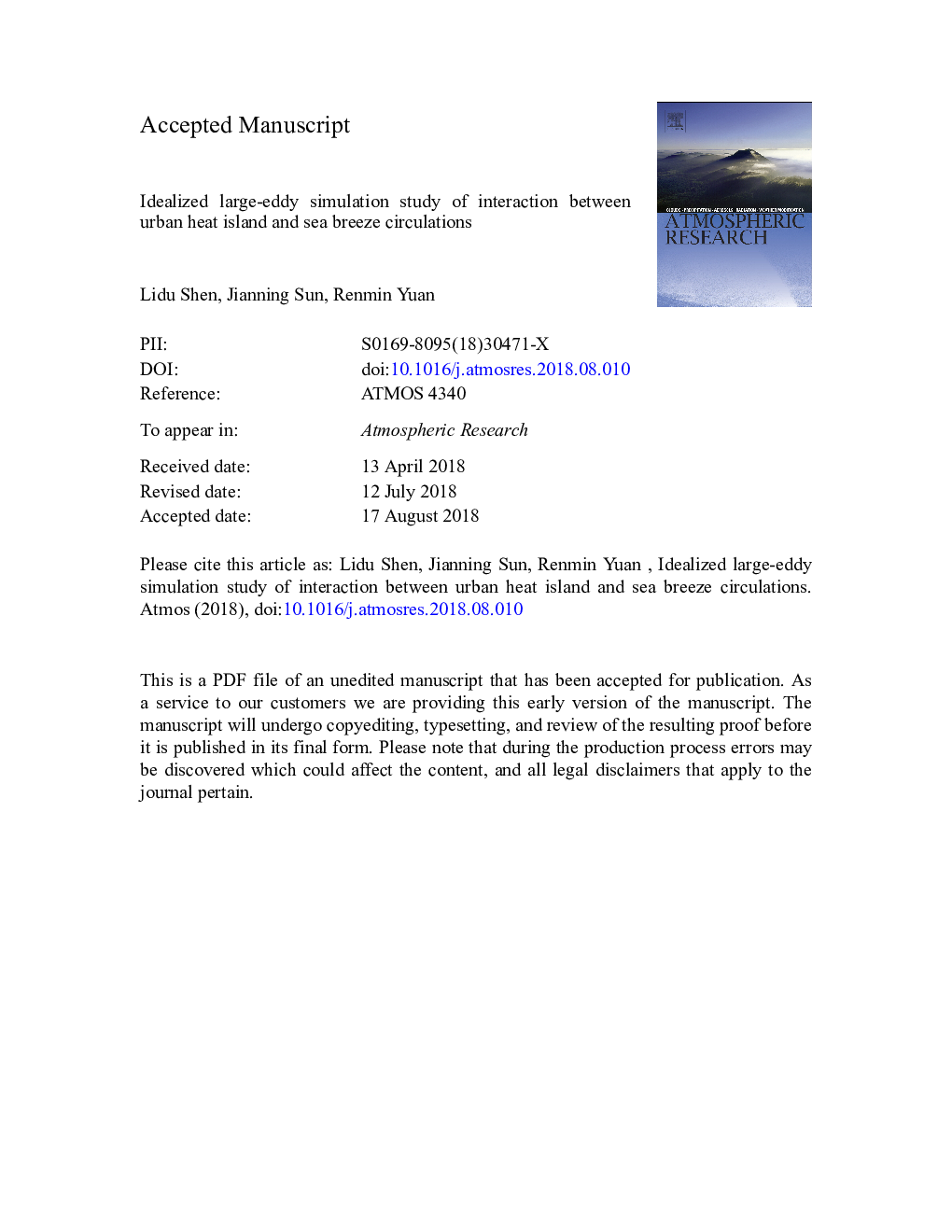| Article ID | Journal | Published Year | Pages | File Type |
|---|---|---|---|---|
| 10113930 | Atmospheric Research | 2018 | 39 Pages |
Abstract
In this study, large-eddy simulations (LES) are conducted to investigate the interaction between the urban heat island (UHI) circulation and the sea breeze (SB) circulation. An idealized city, which has higher surface heat flux and lager roughness length than the rural surface, is located adjacent to or at a distance from the coastline. The heat flux over both rural and urban surfaces varies sinusoidally with time to mimic the diurnal variation of surface heating. Five urban cases (with differences in city size, location, surface heating strength, and surface roughness) and one non-urban case are simulated. The results show that the SB circulation is enhanced by stronger surface heating in urban area, which leads to a larger SB velocity, a deeper SB thickness, and a stronger ascending motion over the SB front. Moreover, the ascending motion over the SB front is significantly enhanced when it meets the updraft of the UHI circulation, and the maximum ascending motion occurs when the SB front enters the core of the updraft of the UHI circulation. Larger city size delays the occurrence of the maximum ascending motion. Higher surface drag contributes to the enhancement of the ascending motion of SB circulation by intensifying horizontal temperature gradient near the SB front. On the other hand, when the SB flow occupies the urban area, the boundary layer height rapidly decreases to a much lower level, and the UHI circulation is eliminated.
Related Topics
Physical Sciences and Engineering
Earth and Planetary Sciences
Atmospheric Science
Authors
Lidu Shen, Jianning Sun, Renmin Yuan,
